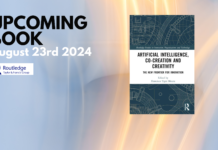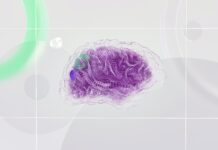In recent years, the intersection of artificial intelligence and creative expression has led to some remarkable breakthroughs in the world of music. One such milestone is “Now and Then” by The Beatles, a song that beautifully exemplifies how AI can empower human creativity and, in doing so, bring timeless music to new heights. This song, released this week, is not just a testament to the enduring legacy of the Fab Four, but also to the potential of AI in the realm of creative arts.
The story of “Now and Then” is a fascinating one, rooted in the nostalgia of The Beatles’ past and propelled into the future by the power of AI. As fans eagerly anticipated this “last” song from the legendary band, the creative process behind it unveiled a unique blend of innovation and homage.
The journey of “Now and Then” began with a demo recorded by John Lennon in the late ’70s at The Dakota, his residence in New York. It was a rough recording, marred by the limitations of the technology available at the time. The poor quality of the cassette tape had left the song in production limbo for years. But then came a breakthrough—AI.
Here is a short documentary that was released by the band to explain the process:
Producer Giles Martin, in collaboration with Paul McCartney and Electric Light Orchestra frontman Jeff Lynne, harnessed the power of machine learning technology to resurrect this musical gem. The AI technology utilized in “Now and Then” was designed to recognize and isolate individual voices from a recording, a process described as “demixing.” It was akin to taking a complex puzzle and meticulously piecing it together with the utmost precision. In this case, it allowed them to extract John Lennon’s vocals from the background noise, even with the presence of a television playing in the background.
What was the result? Here is the official video of “Now and Then”, directed by Peter Jackson:
As a lover of both music and AI, I find this application of technology in music production truly fascinating. It’s a reminder that the marriage of art and technology can lead to magical results. In a crowded room with various sounds competing for attention, AI was able to discern the voices of Lennon, McCartney, and others, making it possible to resurrect and enhance “Now and Then” to perfection.
The AI technology employed is a testament to its evolving capabilities in the creative field. While we’re only scratching the surface of AI’s potential, “Now and Then” demonstrates that AI is not just a tool for technical tasks but a partner in the creative process. Paul McCartney, known as one of the most creative humans in the field of music, recognized the potential of AI in fulfilling the creative intent envisioned by John Lennon decades ago. This creative intent, originally conceived by one of the greats, found its completion through the collaboration of human talent and artificial intelligence.
Despite the incredible achievements made possible by AI, skepticism abounds, especially among purist fans of iconic bands like The Beatles. The ethical questions surrounding the use of AI in art and music are essential and should be addressed. However, it’s equally vital to recognize the potential of AI to breathe new life into creative projects while maintaining their authenticity. In the case of “Now and Then,” the changes made were authentic, resonating with the essence of The Beatles’ music.
The beauty of this collaboration is that it underscores the idea that technology and creativity can coexist harmoniously. The “small achievements” of AI, such as improving the quality of old recordings, can resonate with us in profound ways. As technology continues to advance, we must embrace the possibilities it offers while staying true to the core values of art and creativity.
The release of “Now and Then” serves as a remarkable example of this union, and the fact that The Beatles, whose creative intentionality and integrity are unquestionable for most, have adopted AI for a creative task further validates the use of AI as a valuable tool for artists. This harmonious partnership between human creativity and AI is a bridge to the future, where the boundaries of what is artistically possible are continuously expanding.
To finish up, “Now and Then” by The Beatles, crafted with the assistance of AI, is a testament to the enduring power of their music and the limitless potential of creative technology. It reflects a compelling narrative of artistic revival and the journey towards a future where art and AI collaborate seamlessly, unlocking new dimensions of creativity that were previously unimaginable. The harmonious blend of human vision and technological innovation has opened up a new chapter in the history of music and creative arts, reminding us that, together, they can create something truly extraordinary.





